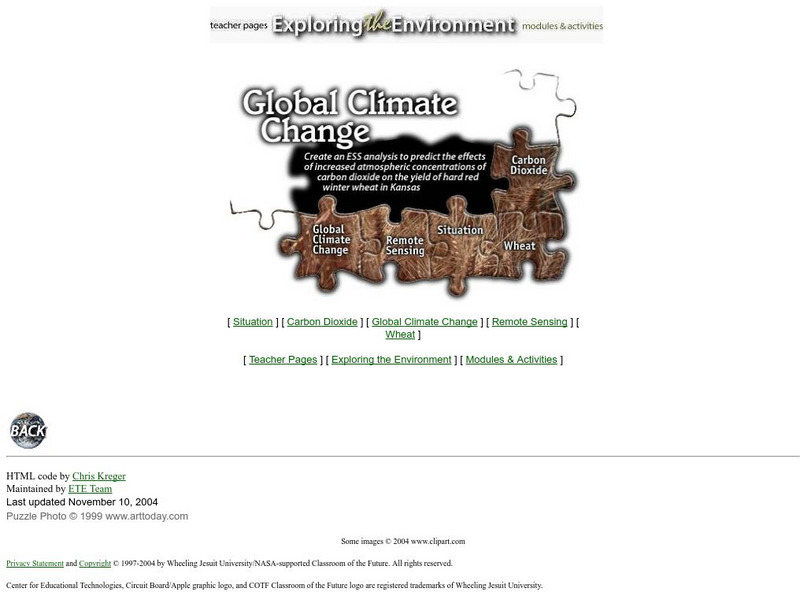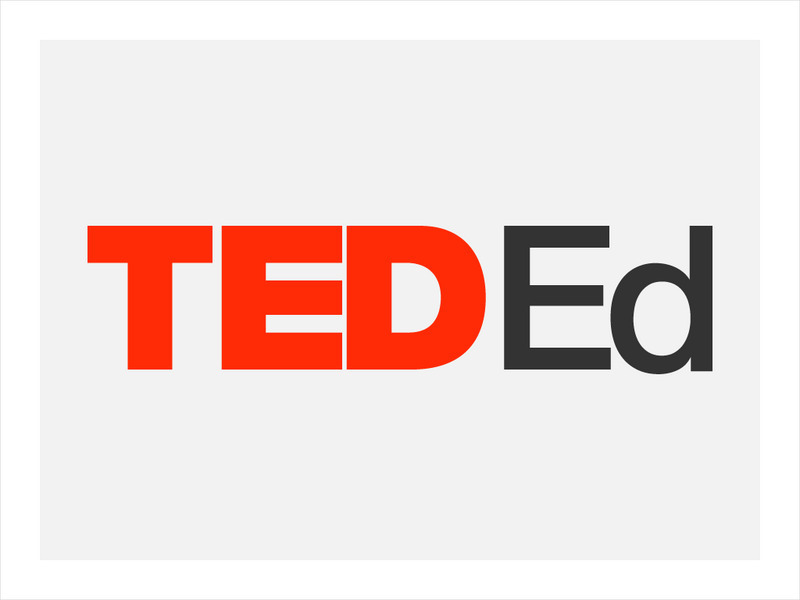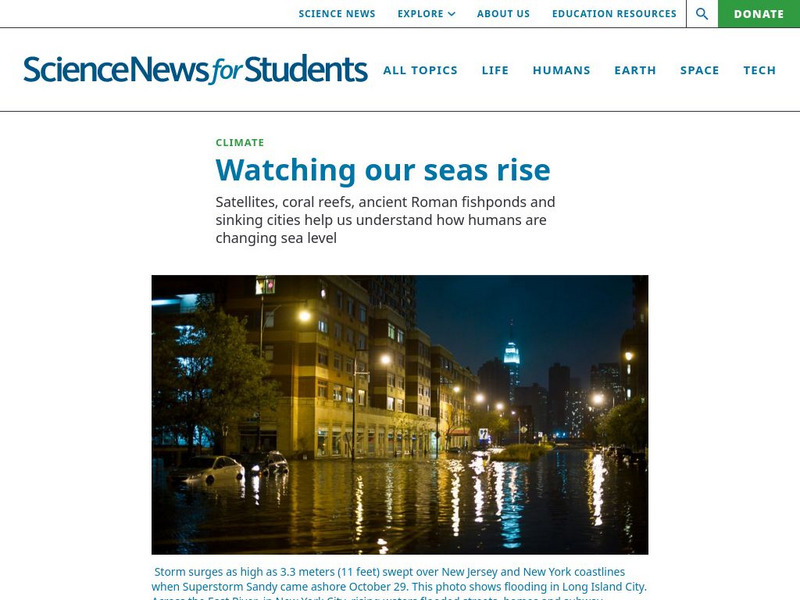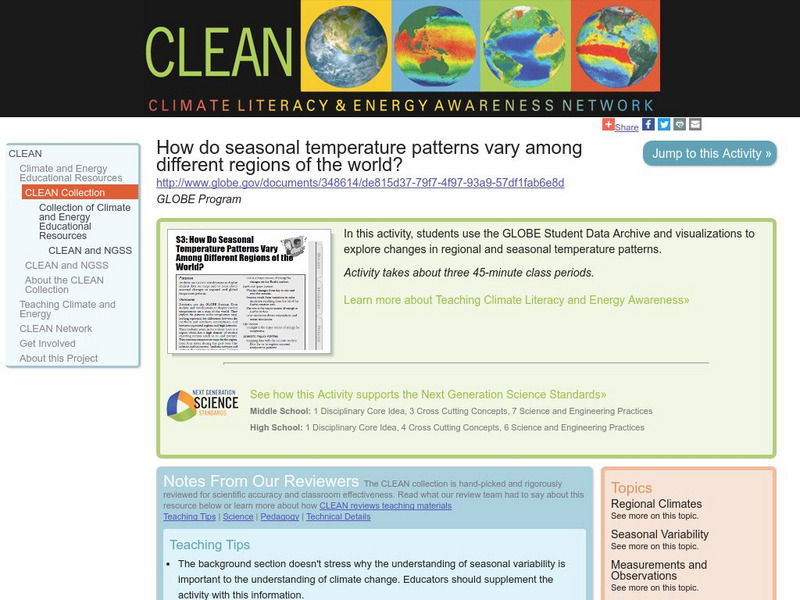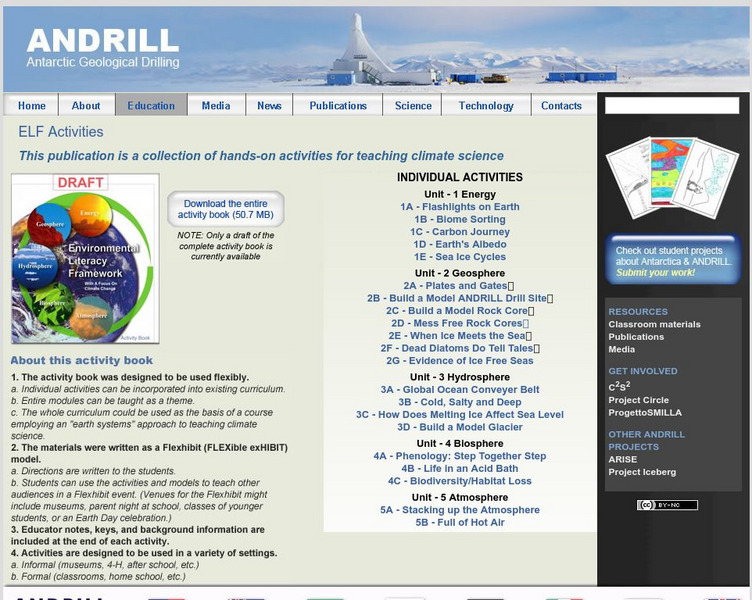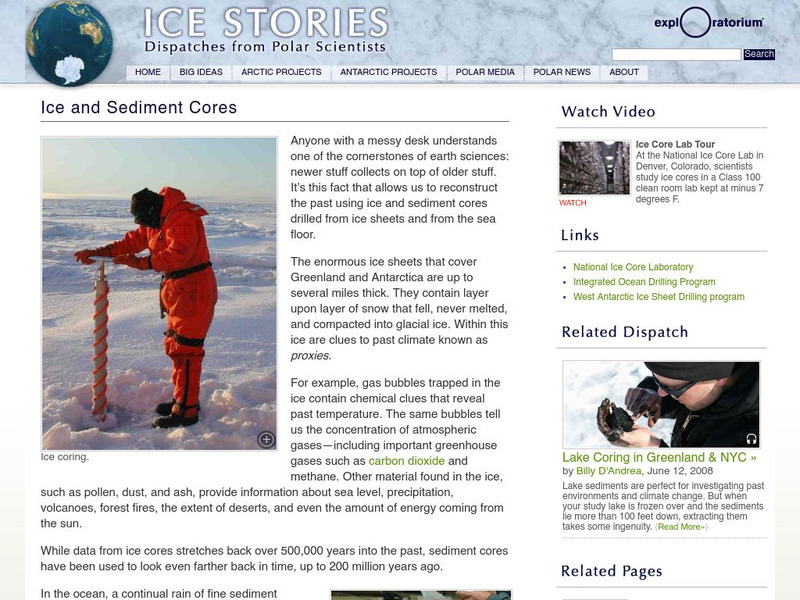Climate Literacy
Clean: What Happens to Ice in Water?
Students investigate the properties of water in the ice and liquid phase as it relates to convection in the ocean and density driven circulation, and ultimately the climate.
Other
Union of Concerned Scientists: Global Warming
This resource provides statistical evidence, backgrounders, FAQs, climate impact reports, and suggested solutions to the global problem.
Center for Educational Technologies
Exploring the Environment: Global Climate Change
This tutorial looks at carbon dioxide in the atmosphere and how changes can impact wheat production in Kansas.
Other
Digital Library for Earth System Education: Teaching Box: Essentials of Weather
A suite of lessons focusing on the basic elements of climate and weather. Inquiry-based exploration of extreme weather events and the factors of weather including clouds, wind, air pressure, temperature, and the water cycle.
NASA
Nasa: Why Is Carbon Important?
Students explore the relationship between atmospheric carbon dioxide concentrations and temperature, and how these relate to climate change. Graph and map data are used as evidence to support the scientific claims they develop through...
TED Talks
Ted: Ted Ed: Rachel Pike: The Science Behind a Climate Headline
In this brief video tutorial, atmospheric chemist Rachel Pike provides a glimpse of some of the methods that scientists are using today to study climate change and Earth's atmosphere. [4:14]
Science Education Resource Center at Carleton College
Serc: Hands on Meteorology
A collection of interactive concept models and active learning materials for teaching meteorology that illustrate conceptually difficult processes in atmospheric science. Active learning exercises are provided as guided instruction to...
Society for Science and the Public
Science News for Students: Watching Our Seas Rise
Ocean levels are increasing around the world. Find out why this type of climate change has scientists concerned.
Climate Literacy
Clean: Ocean Currents and Sea Surface Temperature
To discover the link between ocean temperatures and currents as related to our concern for current climate change.
University Corporation for Atmospheric Research
Ucar: Dendrochronology Trees: Recorders of Climate Change
Students discover how tree age can be determined by studying the rings, and how ring thickness can be used to deduce times of optimal growing conditions. Then they investigate simulated tree rings applying the scientific method to...
NASA
Nasa: Climate Kids: Research
Read about all the important work NASA scientists have uncovered about climate science.
Climate Literacy
Clean: Seasonal Temperature Pattern Variation in Different Regions of the World
Students use GLOBE climate science visualizations to display student data on maps and to learn about seasonal changes in regional and global temperature patterns.
Other
Antarctic Geological Drilling: Environmental Literacy Framework Activities
An impressive collection of lessons on climate science and climate change. The entire book can be downloaded. As well, each instructional activity has its own page with some combination of background information, PowerPoints, images,...
Exploratorium
Exploratorium: Ice Stories: Ice and Sediment Cores
Learn how scientists look inside glacial ice sheets by studying ice cores and use the clues found there to learn about past climates.
American Geosciences Institute
American Geosciences Institute: How Ice Cores Are Used to Determine Past Climate
Find out how climate scientists use data from ice cores to determine past climate conditions.


